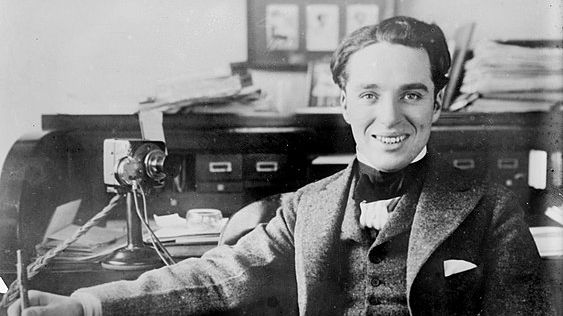Charles Spencer Chaplin, born on April 16, 1889, in London, England, was an English actor, filmmaker, and composer who became one of the most influential figures in the history of cinema. Rising from a childhood marked by poverty and hardship, Chaplin’s journey to global fame is a tale of resilience, creativity, and artistic brilliance. His career spanned over 75 years, and his iconic character, “The Tramp,” left an indelible mark on popular culture. Through silent films, Chaplin brought laughter to millions, often wrapping social critique in humor and pathos. Charlie Chaplin Biography, Age, Height, Model and Wife
Early Life and Hardships
Chaplin was born into a struggling family of entertainers. His father, Charles Chaplin Sr., was an alcoholic who abandoned the family early, and his mother, Hannah Chaplin, was a music hall performer who battled mental illness. Financial instability plagued their lives, and Chaplin spent time in workhouses as a child. His mother was eventually institutionalized, further compounding the challenges young Chaplin faced.
Despite these hardships, Chaplin developed an early love for performing. At the age of five, he made his stage debut when his mother’s voice gave out during a performance, and he was pushed onto the stage to replace her. His ability to charm audiences foreshadowed the immense talent that would define his career.

Rise to Fame in Silent Cinema
Chaplin’s breakthrough came when he joined the Fred Karno comedy troupe in 1908. The troupe toured internationally, including performances in the United States, where Chaplin caught the eye of Mack Sennett, the head of Keystone Studios. In 1913, Chaplin joined Keystone and quickly became a popular actor in Sennett’s slapstick comedies.
During this time, Chaplin developed his most famous persona—The Tramp. First appearing in Kid Auto Races at Venice (1914), the Tramp, with his bowler hat, cane, ill-fitting suit, and distinctive mustache, became a beloved figure worldwide. The character embodied the underdog—mischievous but kind-hearted, vulnerable yet resourceful—a symbol of humanity’s struggle for dignity.
Chaplin soon transitioned from actor to filmmaker, writing, directing, and starring in his films. His first directorial efforts at Keystone demonstrated a unique blend of comedy and sentiment, setting him apart from his peers. In 1915, Chaplin joined Essanay Studios, where he refined his filmmaking style and gained creative control.
Artistic Mastery and Social Commentary
Throughout the 1920s, Chaplin solidified his place as one of cinema’s most innovative artists. Films like The Kid (1921), The Gold Rush (1925), and City Lights (1931) showcased his genius for blending humor with pathos. His films often touched on social issues, such as poverty, class struggles, and human suffering, wrapped in comedic narratives that resonated universally.
City Lights was particularly notable for being a silent film released during the early sound era. Chaplin resisted the transition to talkies, believing that his silent comedy had a universal appeal that spoken dialogue could not replicate. The film, which tells the story of a blind flower girl and the Tramp’s efforts to help her, is still regarded as one of the greatest films ever made.
Chaplin’s keen sense of social critique came to the forefront in Modern Times (1936), where he satirized the dehumanizing effects of industrialization. This film, though still largely silent, featured synchronized sound effects and Chaplin’s voice for the first time. The Tramp struggles to survive in a mechanized world, humorously battling factory machines, automation, and the absurdities of modern society.
In 1940, Chaplin made his first fully talking film, The Great Dictator, a bold political satire condemning Adolf Hitler and fascism. The film was daring at the time, as the world teetered on the brink of World War II. Chaplin played dual roles—the Tramp-like Jewish barber and the tyrannical dictator Adenoid Hynkel—using humor to deliver a heartfelt plea for peace and humanity in his final speech.
Personal Life and Controversy
Despite his artistic success, Chaplin’s personal life was marked by controversy. He had several tumultuous relationships and marriages, often with much younger women. His marriages to Mildred Harris, Lita Grey, and Paulette Goddard were highly publicized and scandal-ridden. In 1943, he married Oona O’Neill, the daughter of playwright Eugene O’Neill, with whom he had eight children. This marriage lasted until his death and brought him personal stability.
Chaplin also faced political scrutiny. During the McCarthy era in the United States, he was accused of having communist sympathies due to the progressive themes in his films. In 1952, while traveling to England for the premiere of Limelight, Chaplin was barred from re-entering the U.S. His forced exile led him to settle in Switzerland with his family.
Later Life and Legacy
Although his later films, such as Monsieur Verdoux (1947) and A King in New York (1957), were less commercially successful, they demonstrated his continued willingness to take risks and explore new ideas. His final film, A Countess from Hong Kong (1967), featured Marlon Brando and Sophia Loren but failed to resonate with audiences. By then, the silent film era was long gone, and Chaplin’s style had fallen out of favor.
In the later years of his life, Chaplin received numerous honors for his contributions to cinema. In 1972, he returned to the United States to receive an honorary Oscar, marking a reconciliation with Hollywood. The standing ovation he received, which lasted over 12 minutes, was a testament to his lasting impact on generations of filmmakers and moviegoers.
Chaplin spent his final years in Vevey, Switzerland, where he enjoyed a peaceful life with his family. On Christmas Day in 1977, he passed away at the age of 88. His death marked the end of an era, but his legacy endures.
Conclusion
Charles Chaplin’s life was a remarkable journey from abject poverty to global stardom. He was more than just a comedian; he was a visionary artist whose work reflected the complexities of the human condition. His films, infused with humor, empathy, and social commentary, continue to resonate with audiences across the world. The Tramp, with his resilience and charm, remains an enduring symbol of hope and humanity. In a world that often felt chaotic, Chaplin’s films offered both laughter and solace, proving that cinema could touch hearts, transcend borders, and change minds.



















